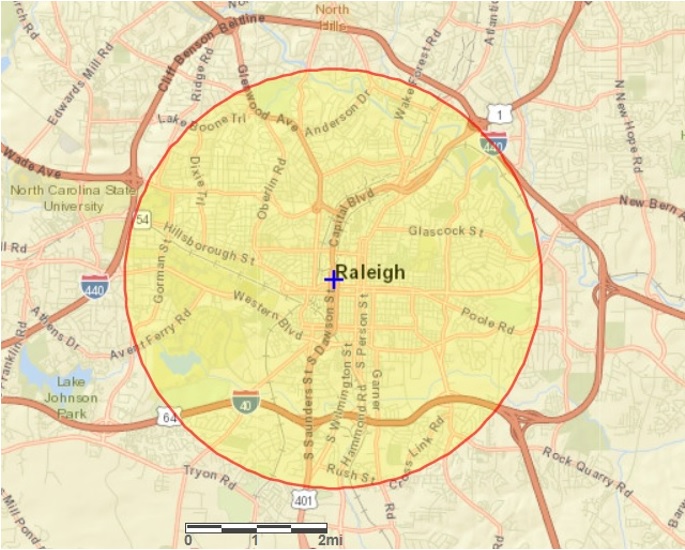
A 3-mile radius is very large – here, as shown, it’s much of inside the Beltline Raleigh in regard to the state Capitol.
At the nuisance trial in Raleigh, Steve Wing was testifying about his views on hog farms.
Wing was both a researcher at UNC-Chapel Hill – and an officer in a nonprofit organization that filed complaints about the hog industry. He died of cancer in 2016 and so his testimony was by videotape from a deposition that year.
On the tape, Wing says some remarkable things about hog farming while acknowledging he hasn’t been on a farm. Let’s look at one fact.
Wing testified that a single, solitary hog farm can negatively affect a zone within a three-mile radius around it.
If you didn’t know better, you might nod and think that could indeed be the case.
Stop for a moment and think: Do you have any idea what a three-mile radius really is? Could that be the case? (It isn’t.)
It is probably difficult for most people to accurately imagine what three miles around a single farm encompasses.
Try this. Picture the Interstate 440/40 loop that encircles Raleigh. The Beltline, as it’s known, is roughly a three-mile radius around a single point (near Cameron Village shopping area).
Turns out, a three-mile radius is huge – it’s 28 square miles. It takes the average person about one hour to walk three miles in one direction.
A three-mile radius of the White House takes in most of Washington DC.
A three-mile radius encompasses just about the entire city of San Francisco.
A three-mile radius around the Empire State Building in New York City includes much of lower and midtown Manhattan as well as swaths of neighboring boroughs.
Three miles around the Statehouse in Massachusetts is pretty much all of Boston.
According to one study by Wing using that measure, nearly 1 million people in North Carolina live within three miles of a hog farm.
If Wing’s view wins the day, we wouldn’t have any place in North Carolina to put our hog farms.
Which is what it looks like some people want.
– Andy Curliss, CEO
